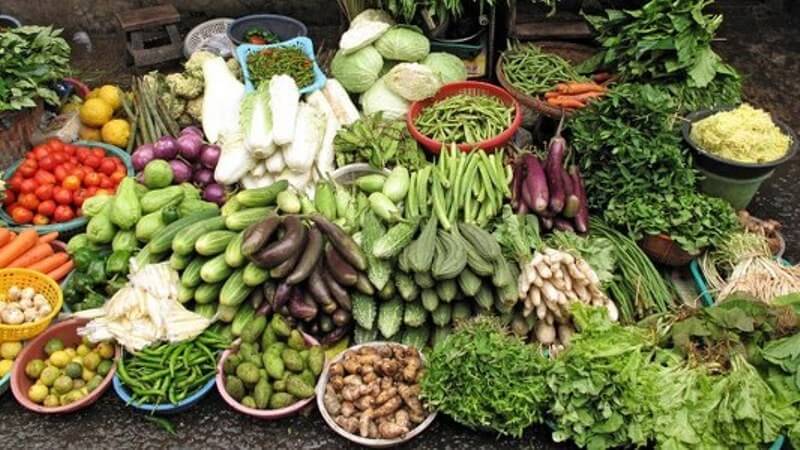
New Delhi- Retail inflation rose to a five-month high of 7.41 per cent in September mainly due to costlier food items, reason enough for the Reserve Bank to continue with its rate hike cycles it has resorted to since May 2022.
Inflation in the food basket rose to 8.60 per cent in September from 7.62 per cent in August.
It is for the ninth month in a row that retail inflation has remained above the Reserve Bank of India’s upper tolerance level of 6 per cent.
Official data released by National Statistical Office (NSO) on Wednesday showed that the retail inflation based on Consumer Price Index (CPI) was at 7.41 per cent in September as against 7 per cent in August.
In the year-ago month, it was at a comfortable level of 4.35 per cent.
The central government has mandated RBI to ensure that retail inflation remains in the range of 2-6 per cent.
The Reserve Bank of India Act mandates the central bank to show up with a report to the government as to why it failed to contain inflation within the targeted band.
One of the RBI’s main functions is to contain inflation at 4 per cent with a bias of 2 per cent on either side.
In September, RBI Governor Shaktikanta Das said acute imported inflation pressures felt at the beginning of this fiscal year have eased but it still remains elevated across food and energy items.
As per the government data, the retail inflation in ‘cereals and products’, ‘milk and products’, vegetables, ‘pulses and products’ and spices were higher at 11.53 per cent, 7.13 per cent, 18.05 per cent and 3.05 per cent and 16.88 per cent respectively in September, higher than the preceding month.
While, the higher prices of ‘cereals and products’ exhibit the imported inflation pressure due to the ongoing Russia-Ukraine war impacting supplies globally, the higher vegetable prices can be attributed to torrential rains damaging crops as well as impacting transportation.
Protein-rich eggs continued to show deflation at (-)1.79 per cent in September, albeit at a slower pace than (-) 4.57 per cent in August.
The rate of price rise in fruits was slower at 5.68 per cent as against 7.39 per cent in the previous month.
For ‘fuel and light’ category, the retail inflation remained above 10 per cent.
Nikhil Gupta, Chief Economist, MOFSL group said India’s headline inflation surged to a five-month high last month versus the market consensus of 7.3 per cent and MOFSL’s expectation of 7.5 per cent.
“As expected, higher inflation was led by food items. Overall, the combination of slightly higher inflation and a fall in IIP raises concerns. However, next month’s data and US Fed’s policy will decide whether we see 35 or 50 basis points hike by the RBI in December 2022. In any case, we continue to expect that the terminal rate will be 6.5 per cent and there will be a pause in global monetary policy in CY23,” Gupta said.
In another set of data released by the government, India’s industrial production slipped to an 18-month low, contracting by 0.8 per cent in August mainly due to a decline in output of the manufacturing and mining sectors.
Food inflation spiked to a 22-month high of 8.4 per cent in September 2022, with a sharp sequential move in vegetables, cereals and spices, Aditi Nayar, Chief Economist at rating firm ICRA said.
“The excessive rainfall in early October 2022 may adversely impact the kharif harvest and delay rabi sowing, thereby posing a material upside risk to the food inflation outlook. However, the impact of the same on the YoY food inflation prints is likely to be partly mollified by the high base that lies ahead for H2FY2023.
“Another rate hike is certain in the December 2022 MPC (Monetary Policy Committee of RBI) review, after the uncomfortable inflation print of 7.4 per cent for September 2022. The quantum of the next rate hike will be determined by how much the inflation print recedes in October 2022, as well as the strength of the GDP growth for Q2 FY2023,” she said.
Cereal prices jumped by 11.53 per cent year on year mainly led by rice and wheat. A decline in acreage under rice and pulses and erratic rains are weighing on food prices, Ritika Chhabra- Economist and Quant Analyst, Prabhudas Lilladher said.
“However, we might see some softening in food prices in October as a result of sequential reversal in food prices,” Chhabra said.
Follow this link to join our WhatsApp group: Join Now
Be Part of Quality Journalism |
Quality journalism takes a lot of time, money and hard work to produce and despite all the hardships we still do it. Our reporters and editors are working overtime in Kashmir and beyond to cover what you care about, break big stories, and expose injustices that can change lives. Today more people are reading Kashmir Observer than ever, but only a handful are paying while advertising revenues are falling fast. |
| ACT NOW |
| MONTHLY | Rs 100 | |
| YEARLY | Rs 1000 | |
| LIFETIME | Rs 10000 | |













